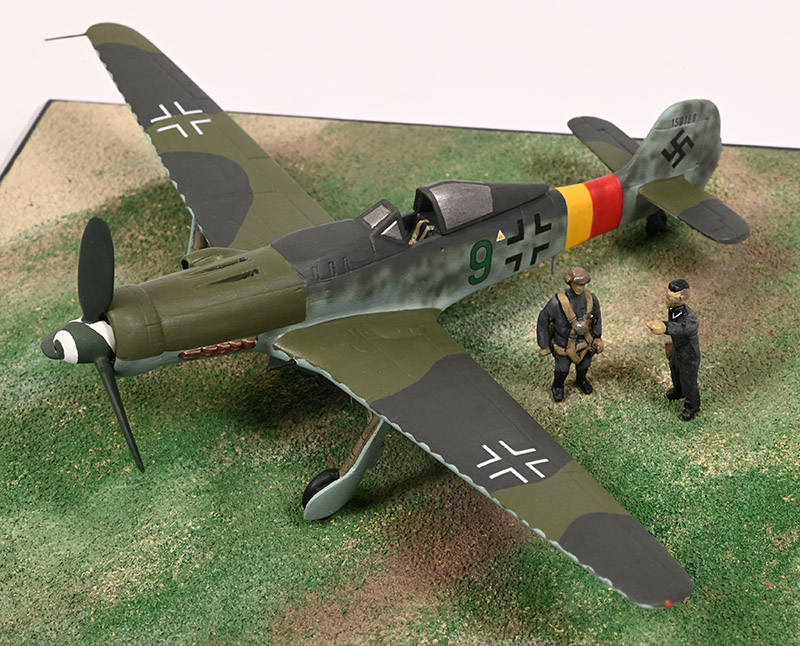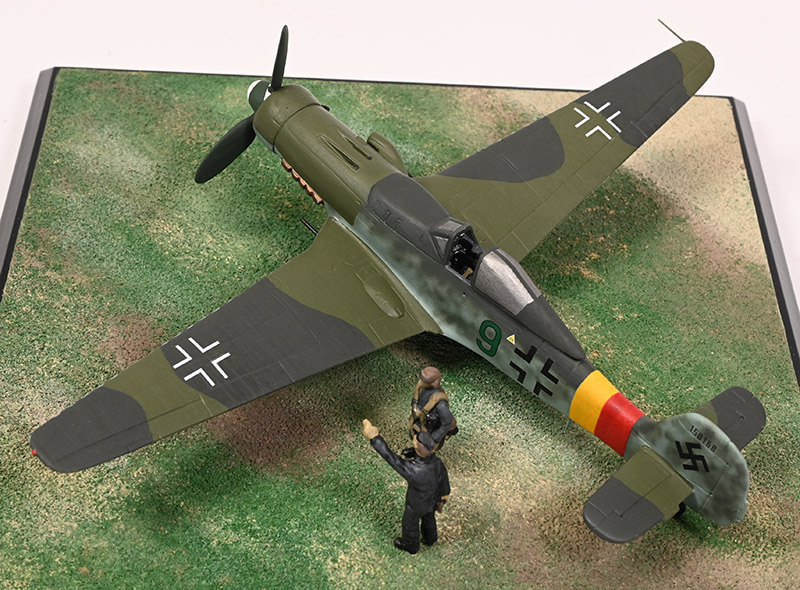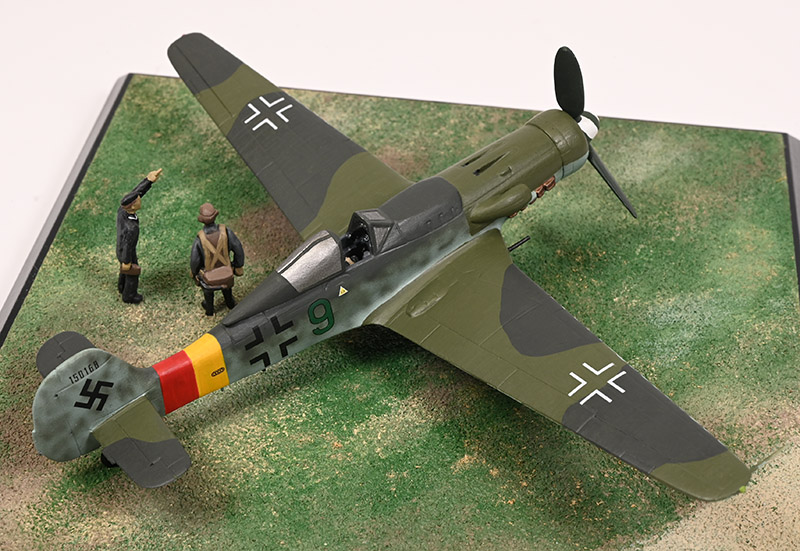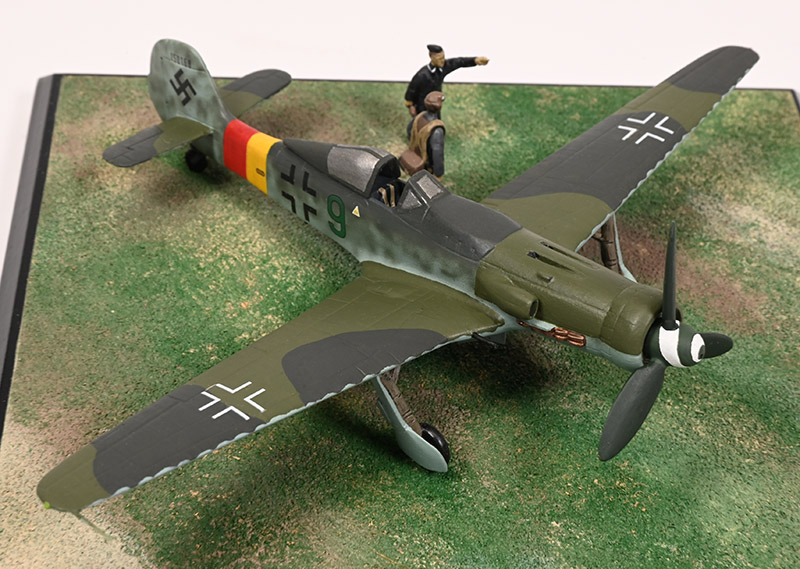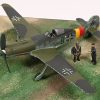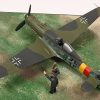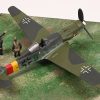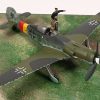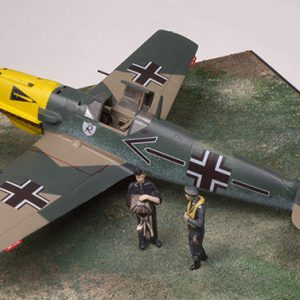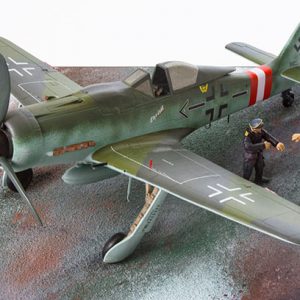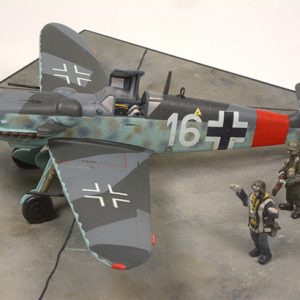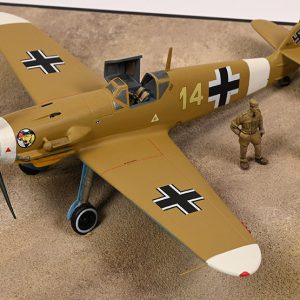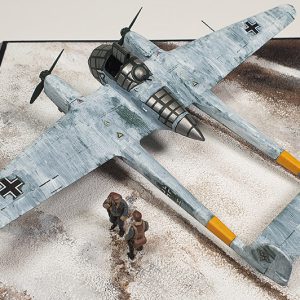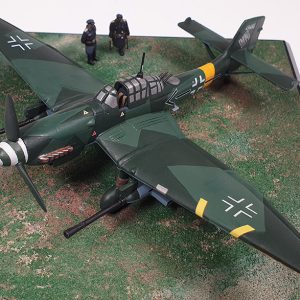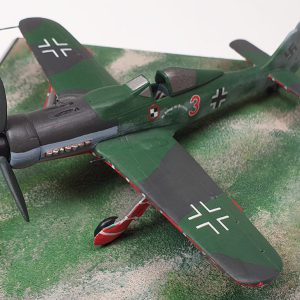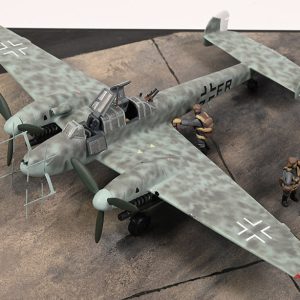Focke Wulf Ta 152H-0 ‘Green 9’ Wk Nr 150168
Stab/JG 301 Oberfeldwebel Willi Reschke, Neustadt-Glewe, Germany, April 1945.
The Focke-Wulf Ta 152 was the final evolution of the Fw 190, and entered combat very late in the war as the high altitude Ta 152 H. Available in very limited numbers, it proved to be an impressive but unreliable fighter.
Kurt Tank began work on a replacement for the Fw 190 early in 1943, and by April 1943 he was ready to submit his new design to the RLM (German Air Ministry). This aircraft resembled the Fw 190, but had an entirely new airframe and was to be powered by an inline engine, either the Daimler-Benz DB 603 or the Junkers Jumo 213. Work had already begun on fitting these engines to the Fw 190 airframe as part of the attempts to produce a high altitude version (the Fw 190C), but the new aircraft required rather more work. The Air Ministry gave the new design the designation Ta 153. The Ta 153 was then rejected on the grounds that it would have caused too much disruption on the production lines. Tank’s next proposal was to produce a fighter that used more components from the Fw 190 but with the more powerful engines. In May 1943 this aircraft was designated as the Ta 152. Two versions were planned; the Ta 152A with the Jumo 213A (the main production version) and the Ta 152B with the Jumo 213E (with a three-speed two stage supercharger with intercooler, optimised for high altitude performance). The DB 603G was a backup option if either version of the Jumo failed. In December 1943, a third version was suggested, as Messerschmitt struggled to produce a high altitude version of the Bf 109 (the Bf 109H and Me 155). This was the Focke-Wulf Ta 152 H, and the German Air Ministry responded with an order for six prototypes.
The total number of Ta 152 aircraft produced is unknown. Although it is possible that the Ta 152C and Ta 152E might have entered limited production late in the war or at least had components ready for assembly, the version of Ta 152 that was produced was the high-altitude Ta 152 H. By February 1945, all Ta 152 production had ceased. 44 Ta 152 H-0/V and 25 Ta 152 H-1 variants were built according to some sources.
The Ta 152 H-1 was powered by a Junkers Jumo 213E, V-12 inverted liquid-cooled piston engine, with GM-1 Nitrous Oxide injection for high altitude performance. The Jumbo engine turned a three-bladed Junkers VS-9 constant-speed propeller. Wing span was 14.44 m (48 ft 6 in), and armament comprised one engine-mounted Motorkanone 30 mm MK108 cannon and two 20 mm synchronized MG 151/20 cannons in the wing roots.
Ta 152 H-1 W.Nr. 150 168 was a late production airframe built at Cottbus. Coded Green 9 and assigned to Geschwaderstab (headquarters unit) of JG 301, the last known operational flight was made by Obfw. Willi Reschke on 24th April 1945. Reschke flew about 70 missions during his combat career in which he claimed 27 aerial victories.
By the beginning of 1944, Allied bombing was disrupting industrial production, which forced paint manufacturers to shift to smaller, more dispersed plants. As a result, RLM 81 and 82 could have different hues, even if the same nominal designation. Nor do any official descriptions or colour card samples survive. Paint manufacturers were obliged, therefore, to provide their own names. Dornier referred to both RLM 81 and 82 as Dunkelgrün; RLM 81 was described by Messerschmitt as Braunviolett and by Blohm & Voss as Olivbraun, although both agreed that RLM 82 was Hellgrün. RLM 83 is even more enigmatic. In any event, post-war photos of W.Nr. 150 168 show a high contrast between the two tone upper wing splinter segments.
The final destination of the Geschwaderstab JG 301 was Leck Airfield. There, all remaining Ta 152s were handed over to British forces, including W.Nr. 150 168. This aircraft was tested by Captain Eric Brown and displayed at the RAE Farnborough air show in 1945. The airframe was scrapped in 1946.


